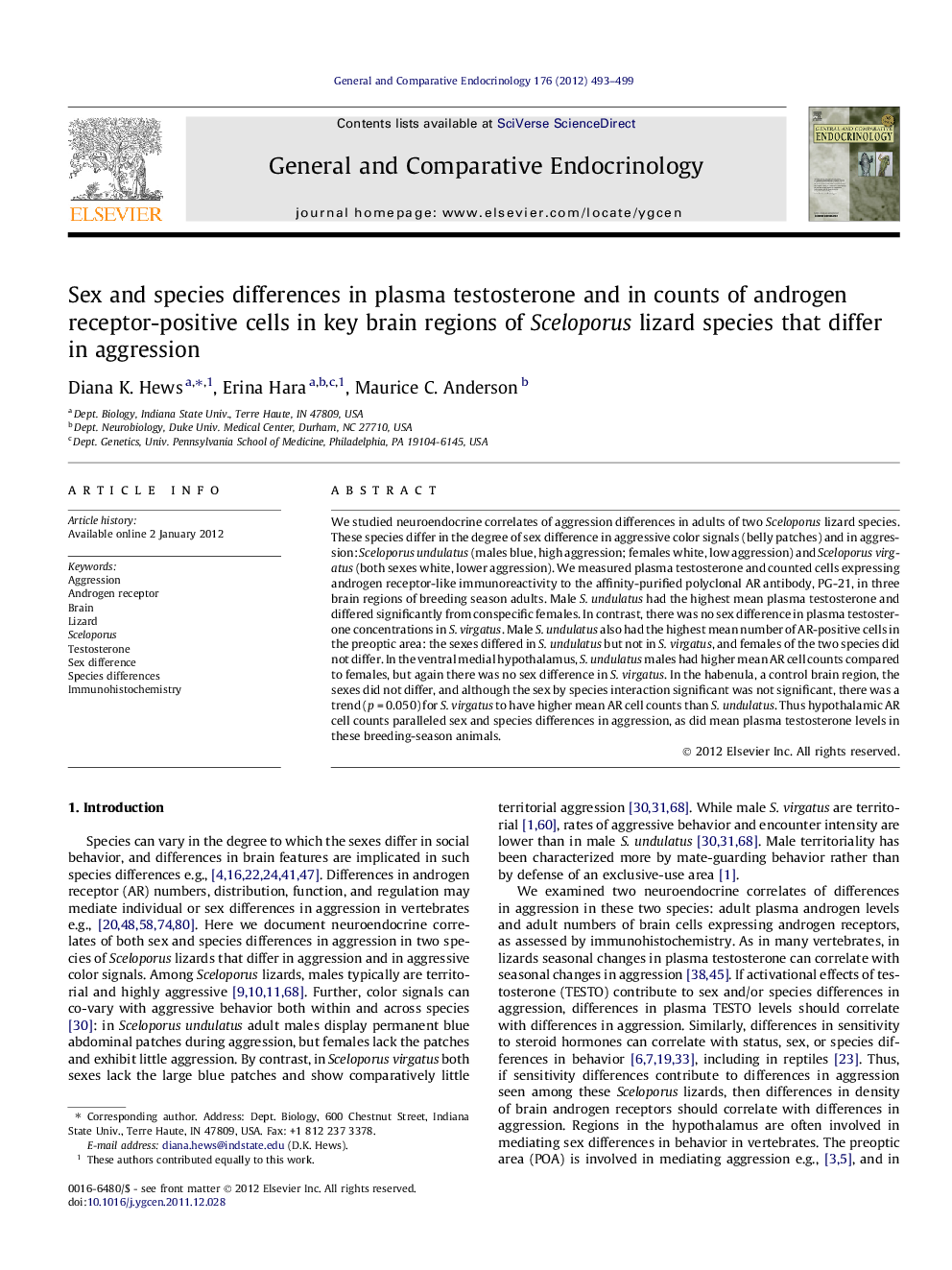| Article ID | Journal | Published Year | Pages | File Type |
|---|---|---|---|---|
| 2800596 | General and Comparative Endocrinology | 2012 | 7 Pages |
We studied neuroendocrine correlates of aggression differences in adults of two Sceloporus lizard species. These species differ in the degree of sex difference in aggressive color signals (belly patches) and in aggression: Sceloporus undulatus (males blue, high aggression; females white, low aggression) and Sceloporus virgatus (both sexes white, lower aggression). We measured plasma testosterone and counted cells expressing androgen receptor-like immunoreactivity to the affinity-purified polyclonal AR antibody, PG-21, in three brain regions of breeding season adults. Male S. undulatus had the highest mean plasma testosterone and differed significantly from conspecific females. In contrast, there was no sex difference in plasma testosterone concentrations in S. virgatus. Male S. undulatus also had the highest mean number of AR-positive cells in the preoptic area: the sexes differed in S. undulatus but not in S. virgatus, and females of the two species did not differ. In the ventral medial hypothalamus, S. undulatus males had higher mean AR cell counts compared to females, but again there was no sex difference in S. virgatus. In the habenula, a control brain region, the sexes did not differ, and although the sex by species interaction significant was not significant, there was a trend (p = 0.050) for S. virgatus to have higher mean AR cell counts than S. undulatus. Thus hypothalamic AR cell counts paralleled sex and species differences in aggression, as did mean plasma testosterone levels in these breeding-season animals.
► Two lizard species previously shown to differ in color and visual signaling related to breeding season aggression were studied. ► High male aggression species had high mean plasma testosterone compared to males and females in the low aggression species. ► Androgen receptor cell counts in POA and VMH hypothalamic regions paralleled sex and species differences in aggression.
